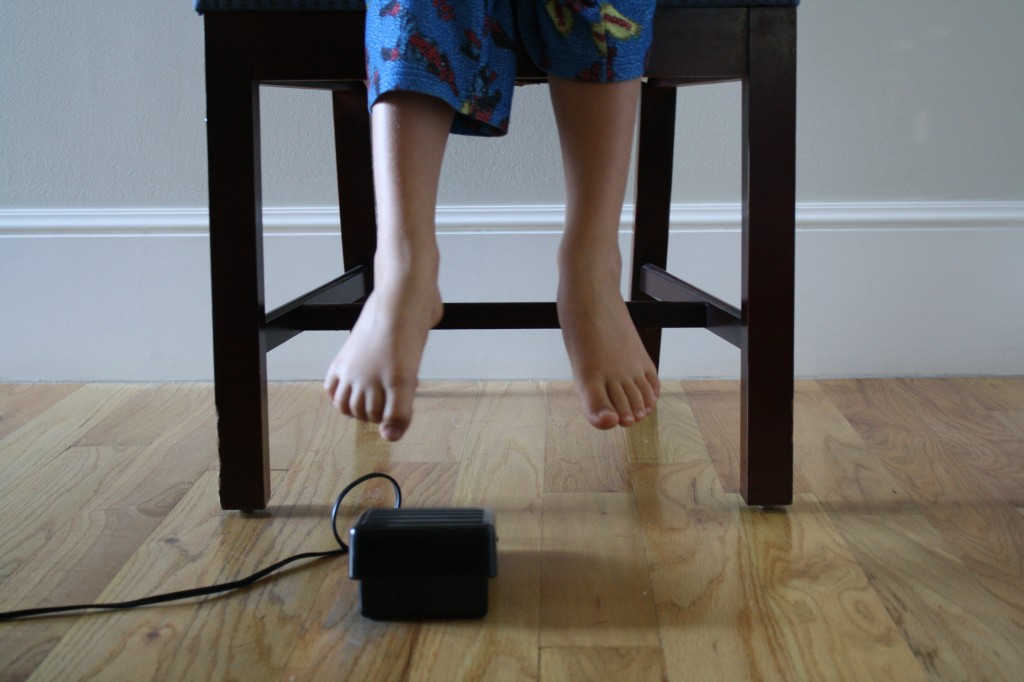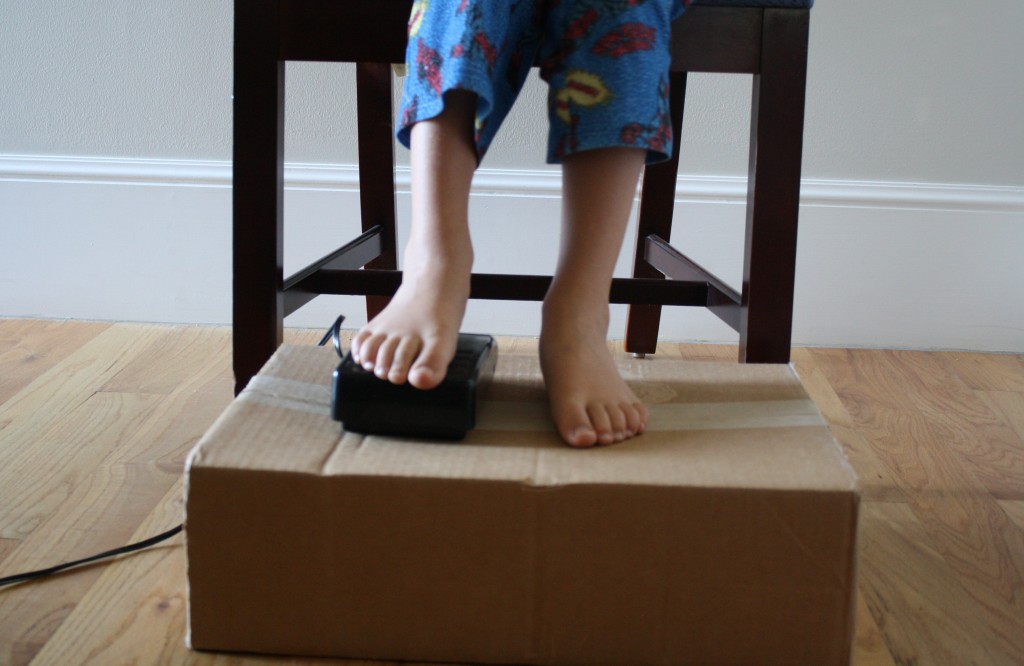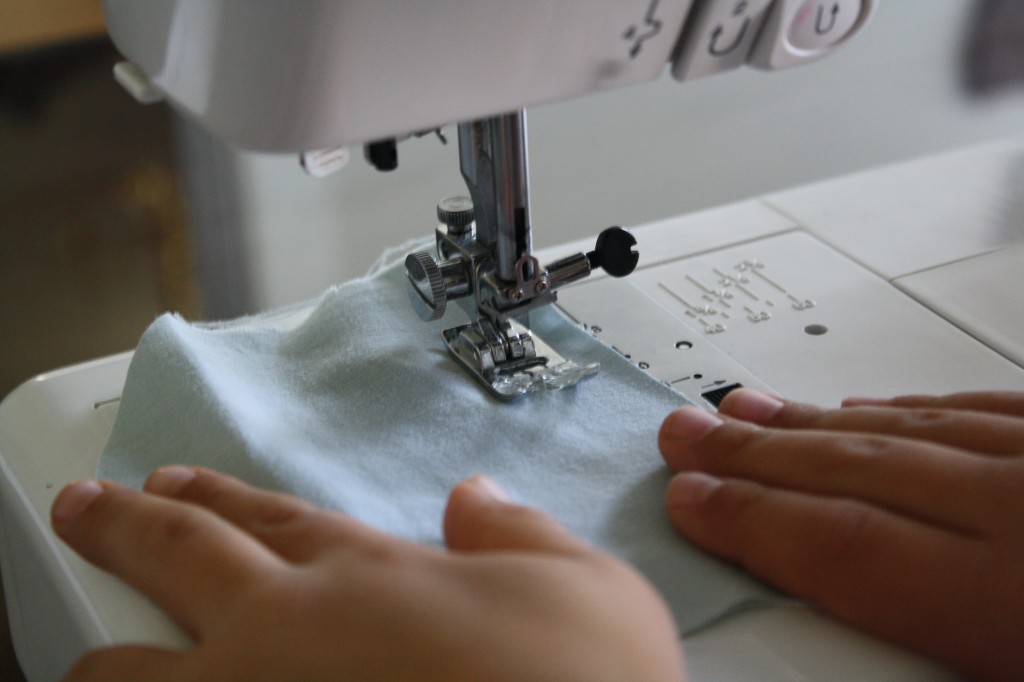THIS LESSON IS PART OF THE SEWING WITH KIDS E-COURSE
If your sewing machine has a speed adjustment, you will want it set to slow until you feel they have gotten comfortable with the sewing machine. Sewing isn’t something that you should just let them go for. You will need to stand by their side to watch them closely.
LESSON PREPARATION
Sewing requires patience and hand-eye coordination, because that needle is sharp and quick. For the fabric control practice, remove the needle from the machine for safety reasons. To do so, loosen the needle clamp and pull the needle out.
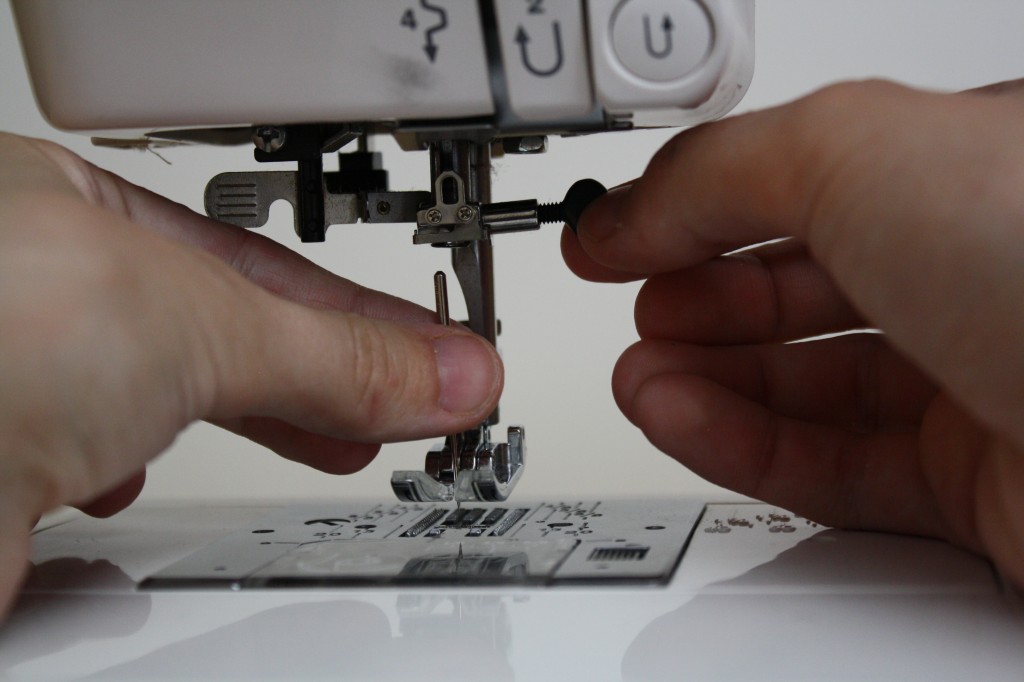
DEMONSTRATION
Explain the feed dogs by showing them the metal teeth under the presser foot. Those metal teeth move when you sew to push the fabric through for you, so you don’t need to push the fabric yourself. They only work if the presser foot is down, “pressing” the fabric onto the teeth underneath. Then proceed to do three demonstrations:
1. Lift the presser foot and put a piece of scrap fabric underneath. Keep the presser foot up and press on the foot pedal, “sewing”, to show how there is no control over the fabric, and that the feed dogs can’t push the fabric through to sew.
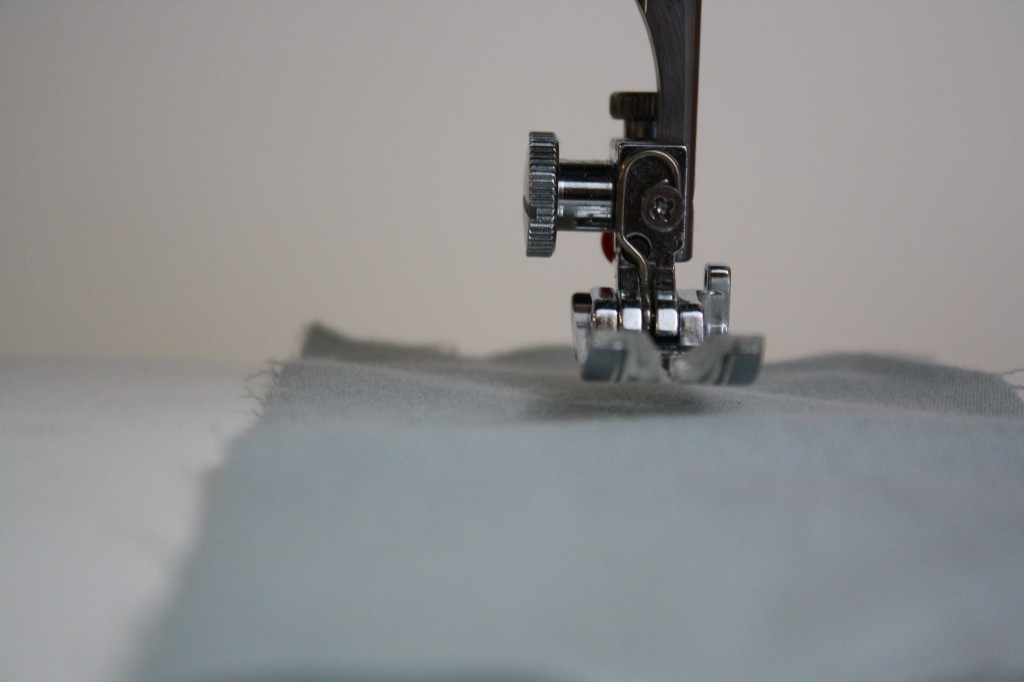
2. Lower the presser foot, with the fabric still in place, and press on the foot pedal. Keep your hands up in the air to show them that even when you don’t touch the fabric, if the presser foot is down, the feed dogs will push the fabric through.
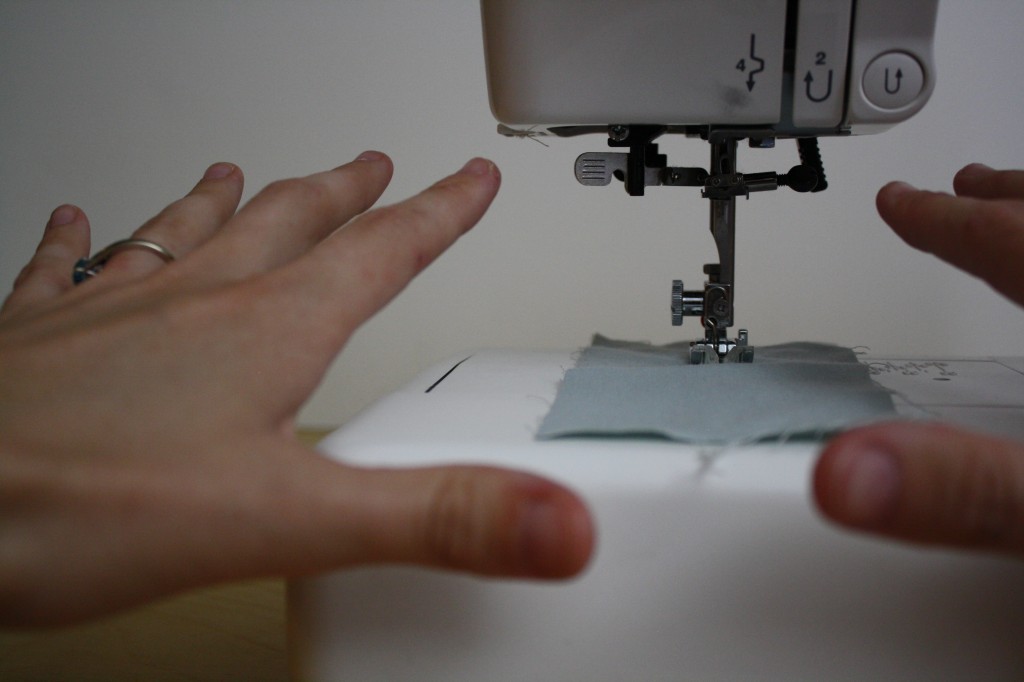
3. With the fabric in place, and the presser foot still lowered, press on the foot pedal. This time use your hands to guide the fabric straight, or to turn it to the left or right. Explain that you are just using your hands to steer, not shove.
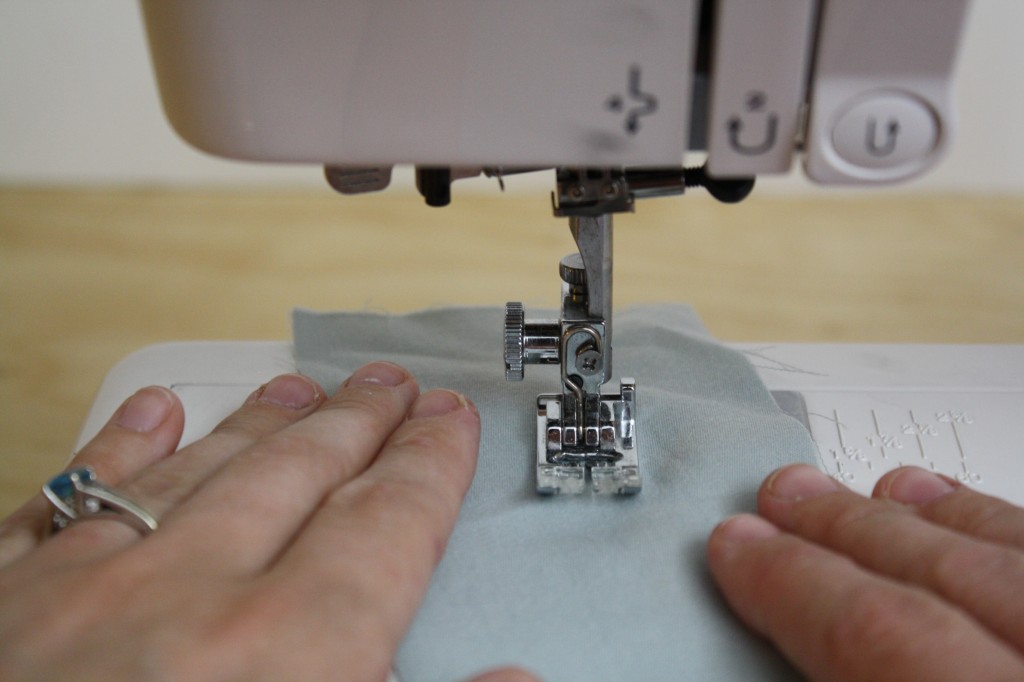
HANDS-ON PRACTICE
After you’ve demonstrated all three variations, let them practice. Explain that the further you push the foot pedal, the faster the machine will sew. If their feet don’t reach, prop the foot pedal on a box.
While they practice (remember, there should be no needle), watch where they place their hands. Are they letting their fingers get too close to where the needle would be? If so, correct their hand placement, and explain that they want to keep their fingers far from the needle so they don’t get hurt.
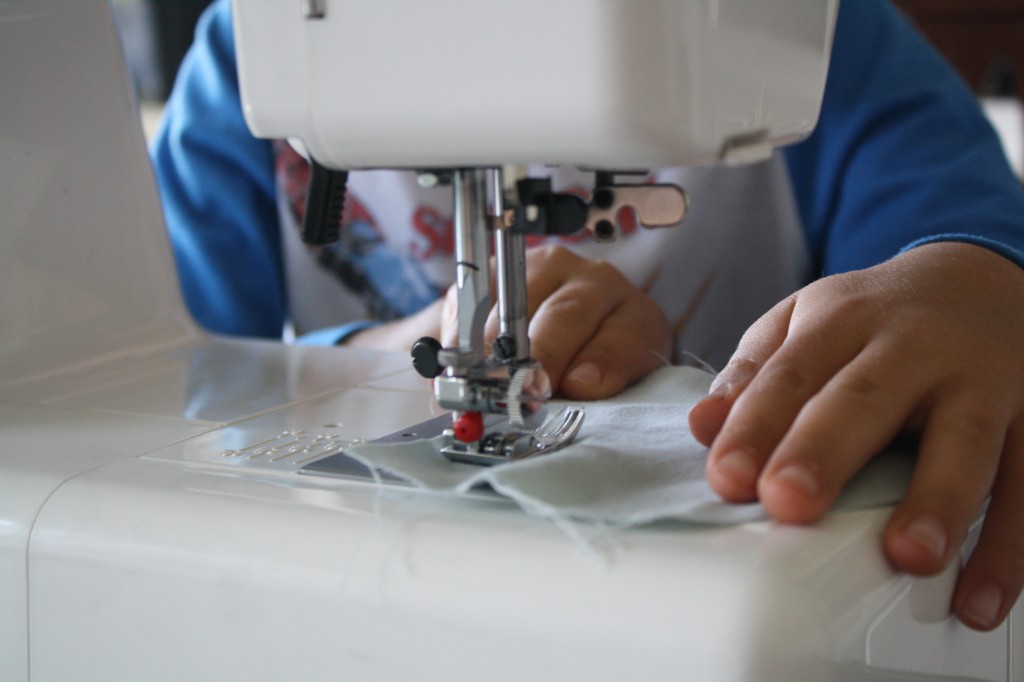
Let them practice pushing lightly on the foot pedal to show that the needle will move slowly when they do. Then let them practice pushing the foot pedal farther down to show that the needle will move very fast when they do.
When they have a fair amount of control over their hands, they are keeping their fingers away from the presser foot and needle, and can keep the foot pedal speed pretty steady, you’re ready to move on to put the needle back in place.
HOMEWORK
